Latin name: Coleus
Category: shrubs, perennial herbaceous plants
Origin: Africa, Asia
Variegated and spectacular tropical handsome coleus
Coleus (Coleus) - a genus in the Lamiaceae family, formerly called Lamiaceae, unites about two hundred species of inpiduals - these are perennial subshrubs and herbaceous annuals. In summer, they flaunt in gardens and parks in flower beds and flower beds, and in winter they are happy to settle down on window sills.
"Case" - such a generic name is called the beautiful coleus, which turned out when translating the word "kleos" from the Greek language. The modern botanical classification of plants has determined a new name for the variegated coleus - this is Solenostemon (Solenostemon). Amateur flower growers have expanded the number of popular names for a spectacular flower resembling nettles, they call it nettle, "fire nettle", poor man's croton, "home nettle".
This colorful ornamental plant is native to the subtropical forests of Africa and Asia.
Coleus, from its tropical homeland, saved the need to have high humidity, more warmth and pleasant sunlight in the conditions of the house. Thanks to these sources, the color of the foliage of the plant will be more colorful and contrasting. And this spectacular miracle looks like a low thirty-five centimeter shrub. It consists of tetrahedral succulent shoots, from below with age they begin to become stiff. Velvety, resembling nettle, unusually attractive leaves up to six centimeters long, heart-shaped, with jagged edges, are the decoration of the stems. The color of the foliage is extremely varied. You will not get tired of admiring the red, yellow, green, brown stripes, veins, borders, large and small specks that make up the marble drawings on the leaf plates of the wonderful poor man's croton.
Fire nettle blooms with white or bluish flowers that do not give the plant additional beauty, decorativeness and attractiveness. Moreover, after flowering, which takes energy potential and nutrients from the plant, the leaves become smaller. Removing the buds that have appeared will save the decorative qualities of the houseplant.
It is not surprising that an unpretentious, very popular decorative flower can often be seen in flower beds and flower beds. Coleus feels great in the home kitchen, the living room is transformed by its bright colors, and this exotic adorns the interior of office space, schools, kindergartens. And not only the beauty of this houseplant attracts the attention of flower lovers. Homemade nettle freshens the air in the room, fights pathogenic bacteria, thanks to the phytoncides produced by its colorful leaves. Coleus in pots look very impressive.
Coleus photo it can be contemplated in the next section of the article.
Coleus species
Coleus hybrid (Coleus hybridus)
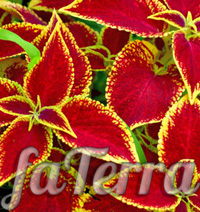 Unusual perennial decorative indoor semi-shrub plant with stems woody from below, growing up to eighty centimeters in height. The main asset of this unpretentious, but loving room with a mild, constant microclimate that does not lead to sudden cold snaps, and especially to frosts, is a home flower with amazing, original in shape and various color leaf plates. The color scheme of the fiery nettle directly depends on the illumination of the area where the plant is located. The more light, the more bright burgundy, red, purple shades, the more shade - the more greenery on the leaves.
Unusual perennial decorative indoor semi-shrub plant with stems woody from below, growing up to eighty centimeters in height. The main asset of this unpretentious, but loving room with a mild, constant microclimate that does not lead to sudden cold snaps, and especially to frosts, is a home flower with amazing, original in shape and various color leaf plates. The color scheme of the fiery nettle directly depends on the illumination of the area where the plant is located. The more light, the more bright burgundy, red, purple shades, the more shade - the more greenery on the leaves.
The attractiveness and unique beauty of hybrid coleus can be contemplated in flower arrangements created by several multi-colored species.
Coleus Blume (Coleus blumei)
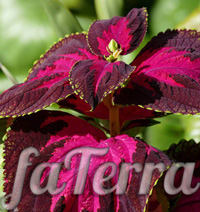 A huge number of varieties of this type of coleus are considered the most popular among amateur flower growers.
A huge number of varieties of this type of coleus are considered the most popular among amateur flower growers.
This plant is native to Southeast Asia.
Coleus blume is a very interesting deciduous ornamental shrub with tetrahedral ribbed stems adorned with pointed, ovoid leaves with jagged edges. The base of the leaf plates from light green to dark green is decorated with a variety of patterns of yellow, cream, purple, pink, golden, burgundy, even black colors. The flowers are absolutely not decorative, so it is better to remove them.
Coleus dog (Coleus caninus)
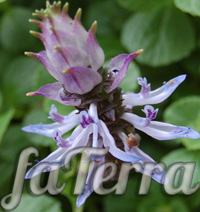 Short up to fifteen centimeters in height, an interesting flower that scares away cats with its smell. Red and green tones are the prevailing colors of the leaf plates of this variety of coleus.
Short up to fifteen centimeters in height, an interesting flower that scares away cats with its smell. Red and green tones are the prevailing colors of the leaf plates of this variety of coleus.
Coleus Renelt (Coleus rehneltianus)
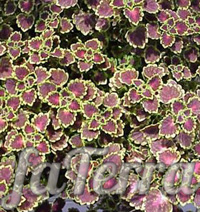 The native territories of the Coleus Renelt, which is represented by a decorative ampelous flower with stems growing up to fifty centimeters, is Sri Lanka. The plant has wide heart-shaped leaf plates with wavy edges, with the help of long petioles oppositely located on the stems. The leaves are veined with yellow, purple, brown or red tints.
The native territories of the Coleus Renelt, which is represented by a decorative ampelous flower with stems growing up to fifty centimeters, is Sri Lanka. The plant has wide heart-shaped leaf plates with wavy edges, with the help of long petioles oppositely located on the stems. The leaves are veined with yellow, purple, brown or red tints.
Coleus Velvet Red
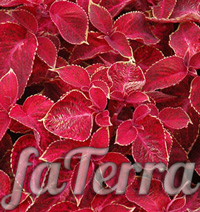 Herbaceous variety reaching a height of sixty centimeters. The plant has large, juicy, burgundy leaves. A very popular variety as an annual plant. In winter, it can decorate any interior, both office and residential premises.
Herbaceous variety reaching a height of sixty centimeters. The plant has large, juicy, burgundy leaves. A very popular variety as an annual plant. In winter, it can decorate any interior, both office and residential premises.
Coleus Avatar
![]() Large, bushy, densely branched plant with large, broad, rounded, textured leaves. The central part of the leaf plate is painted with green and yellow specks, and the edges are dark purple.
Large, bushy, densely branched plant with large, broad, rounded, textured leaves. The central part of the leaf plate is painted with green and yellow specks, and the edges are dark purple.
Coleus Fishnet Stockings
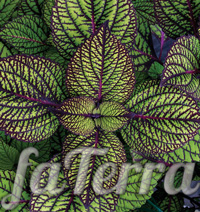 This pine variety with large, wide leaves of a firm consistency on a lush bush, the basis of which is a “fat trunk”, can be admired without stopping. Bright purple streaks are arranged in a strict mesh on the bright green leaf plates.
This pine variety with large, wide leaves of a firm consistency on a lush bush, the basis of which is a “fat trunk”, can be admired without stopping. Bright purple streaks are arranged in a strict mesh on the bright green leaf plates.
Coleus Norris
 The average size of an extremely lush spherical bush delights others. Norris wheels, planted in hanging baskets or on curbs, will look especially colorful. No one will be indifferent to the plant, which has large rounded corrugated leaves of maroon color with an original pattern of a bright pink hue. The bright narrow bright green edging of the leaves makes the bush even more charming.
The average size of an extremely lush spherical bush delights others. Norris wheels, planted in hanging baskets or on curbs, will look especially colorful. No one will be indifferent to the plant, which has large rounded corrugated leaves of maroon color with an original pattern of a bright pink hue. The bright narrow bright green edging of the leaves makes the bush even more charming.
Coleus Henna
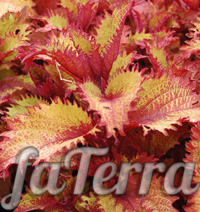 A sun-loving variety of a surprisingly gentle, refined coleus. Its densely branched low bushes are decorated with green-golden leaves that have patterned edges. The upper side of the leaf plate is covered with copper-colored specks. The leaves are burgundy underneath.
A sun-loving variety of a surprisingly gentle, refined coleus. Its densely branched low bushes are decorated with green-golden leaves that have patterned edges. The upper side of the leaf plate is covered with copper-colored specks. The leaves are burgundy underneath.
Coleus Stormy weather
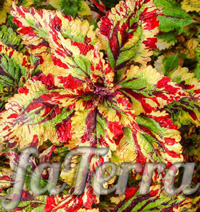 The lush coloring of this lush and strong flower that loves bright light is simply impossible to convey in words. Radiant yellow, dark purple and bright green - all shades intertwined and created an amazingly beautiful plant.
The lush coloring of this lush and strong flower that loves bright light is simply impossible to convey in words. Radiant yellow, dark purple and bright green - all shades intertwined and created an amazingly beautiful plant.
Amazing and unsurpassed are spectacular coleuses that are absolutely different from each other. The abundance of varieties and varieties of this unique flower just rolls over thanks to the friendly work of breeders. They look wonderful and are in demand among amateur flower growers: Coleus Grand Pomegranate, Coleus Harpy, Coleus Khan Atlas, Coleus Hooligan, Coleus Haynes, Coleus Dracula, Coleus Charisma.
Coleus home care
Growing a home plant is absolutely not difficult. For comfortable growth, the coleus needs to create warm and bright conditions close to natural. Even novice flower growers will be able to get a handsome man with bright foliage, which will improve the interior of the room all year round.
Choice of location and temperature
The poor man's croton will be very grateful for four hours of access to bright sunlight, in return he will delight with a chic bright variety of leaf colors. For varieties with plain leaves, less lighting is required. The desired territory for home nettles will be the eastern and western windows.
Lunchtime scorching sun rays are slightly shaded so that the leaves do not burn.
Heat-loving fire nettle feels great at temperatures ranging from 17˚С to 25˚С. In winter, with a decrease in daylight hours, an acceptable pleasant temperature will be 15-18˚С. In the cold, the indoor flower does not absorb water and nutrients well, which can lead to its decay.
Lowering the temperature below 12 ° C can lead to the leaves of a houseplant falling off.
Humidity and watering
The poor man's home croton can be content with the average humidity of the air in the room. You can regulate its level by spraying the air space around the plant, install a container of water next to the plant, or purchase a flower pot with automatic watering.
Soft, warm, settled water is simply necessary for regular and abundant watering in the spring and summer. Coleus wintering should take place in a cool place, where watering must be reduced by half in order to prevent stagnation of water, which can lead to fungal diseases. The soil should not dry out either - the leaf plates will droop and fall off in the future.
Soil and its top dressing
A high-quality, fertile, non-acidic earthen mixture is necessary for the coleus for comfortable growth and flowering, which we get if we take equal shares of soddy, leafy soil, peat and sand. Ready-made universal substrate with a neutral pH level can be purchased at a flower shop.
We support the decorative effect of our homemade nettle by feeding it in the spring and summer using organic matter or mineral fertilizers with a high level of potassium inclusions.
Coleus transplant
For fast-growing home nettles, an annual spring transplant into a small flowerpot with a hole will be useful.
A thick drainage layer is required at the bottom of the pot.
How to propagate coleus?
To propagate the poor man's home croton, seeds and stem cuttings are used. The seed method is more painstaking. Seeds sown in sandy soil will sprout in three weeks. With the advent of two pairs of leaves, the kids are transplanted into separate flowerpots.
How to cut coleus at home can be considered in more detail. To do this, you need to pick up a branch with two formed leaves. We cut off the stalk you like and put it in a settled, not cold water. The roots will appear in a couple of weeks, with their increase, we transplant a young sprout into a small flowerpot.
Diseases and pests of coleus
Violating the conditions of detention, you can provoke the appearance of uninvited guests on your favorite indoor nettle. These can be mealybugs, whiteflies, spider mites.
By inspecting your coleus, you can avoid the appearance of pests.
Having found insects, we process the indoor flower with a solution of soap. If this procedure is not enough, we move on to more serious drugs. It is advisable to use special insecticides.
Difficult moments in growing
- Why does coleus shed its leaves? Too low temperatures below 12˚С, drafts, excessive watering or overdrying of the earthen clod.
- Colorful leaf plates turn pale or become pure green - the plant does not have enough light.
- Indoor nettle grows slowly - the plant wants to recharge.
- The pagons of a young poor man's croton are stretched out - timely pinching has not been done. How to pinch coleus? On a young plant, when three pairs of oppositely arranged leaf plates appear, they must be removed. We also pinch a new pair of leaves, making room for the growth of new ones.
Coleus omens and superstitions
There are both positive and negative properties of the flower.
This wonderful poor man's croton can be a magnet that attracts good moments in the life of the owners, improve their financial condition, career growth. If the flower fades, leaves turn yellow or dries up, it can attract unpleasant life circumstances such as illness, loneliness, lack of money and other misfortunes.
The flower does not harm the human body. It does not contain dangerous toxic and dangerous substances.
Coleus how long this exotic lives, turning into a mysterious plant, depends on the quality content. Take care of your homemade nettle with love, which in any case pleases the owners, with its bright extraordinary colors improves a varied interior, raises your spirits, well-being and positive emotions.














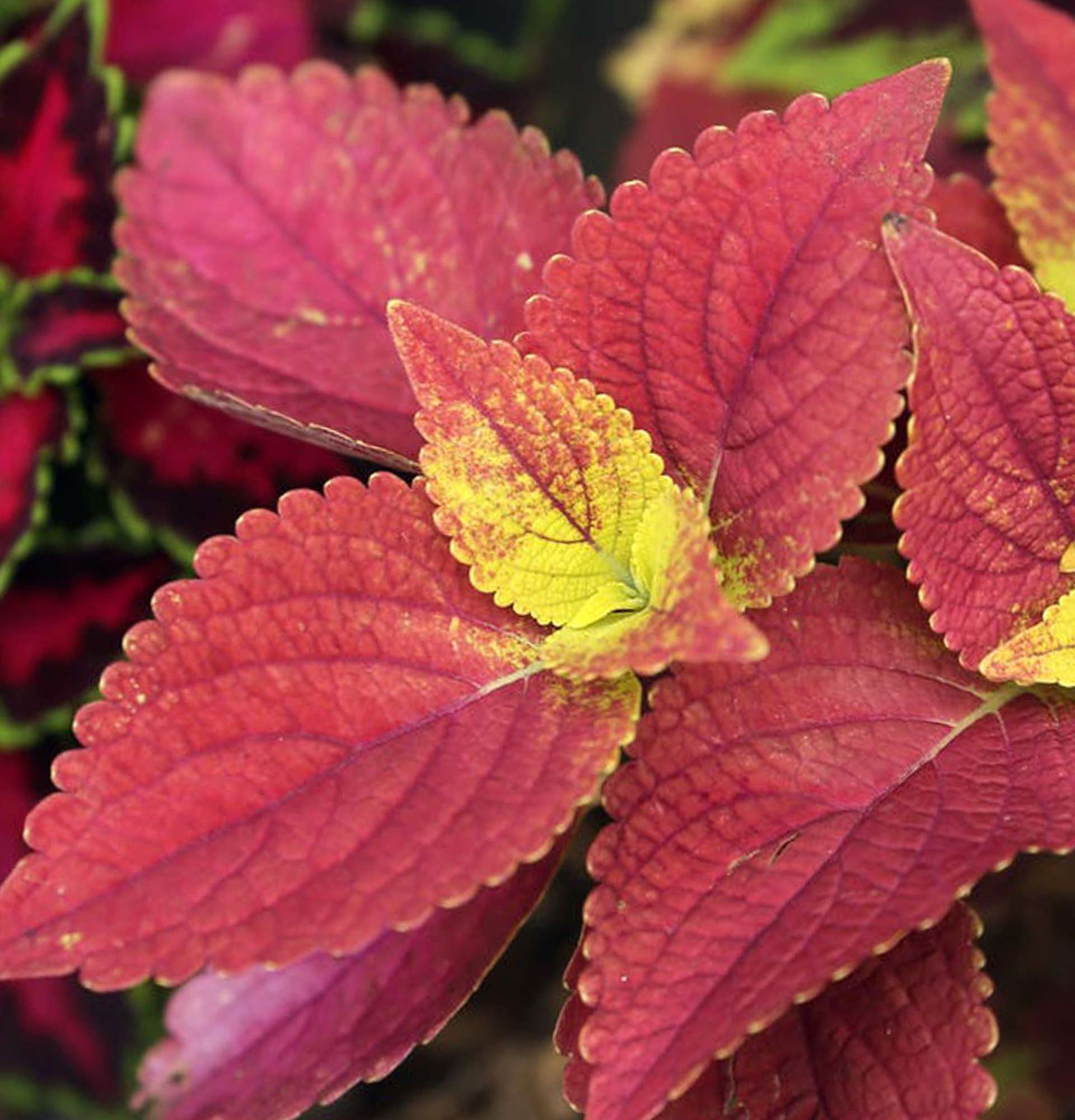
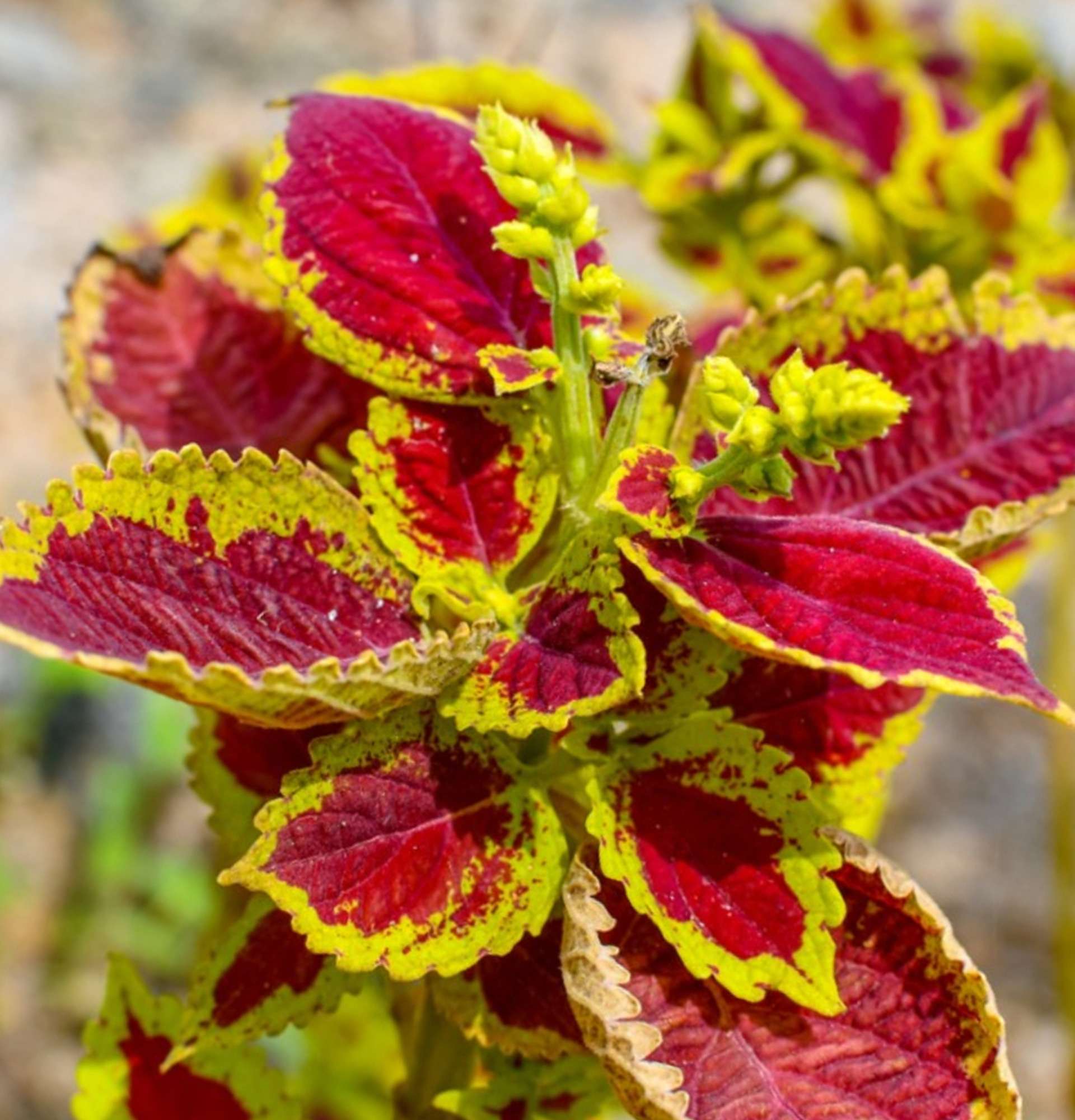
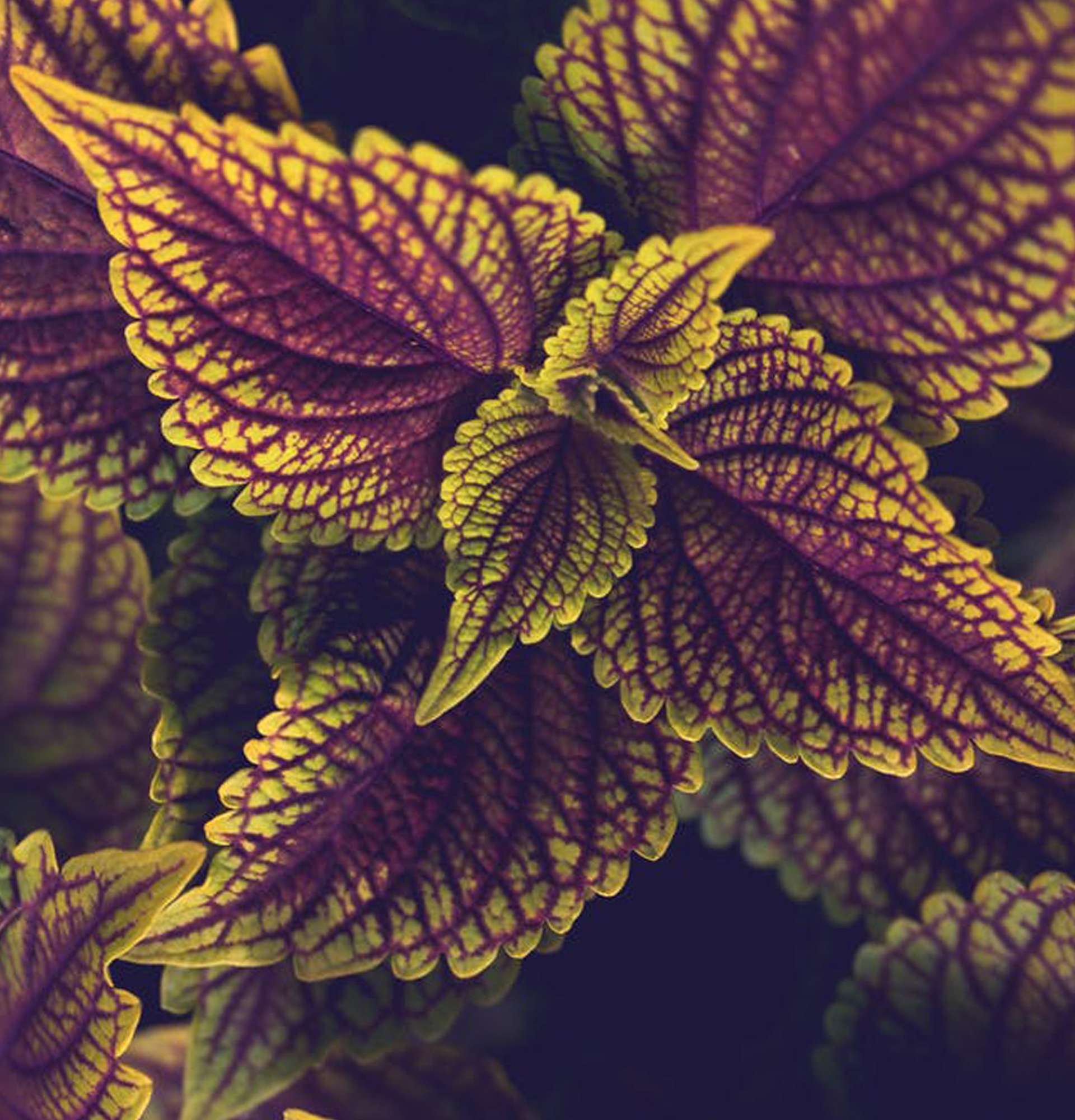



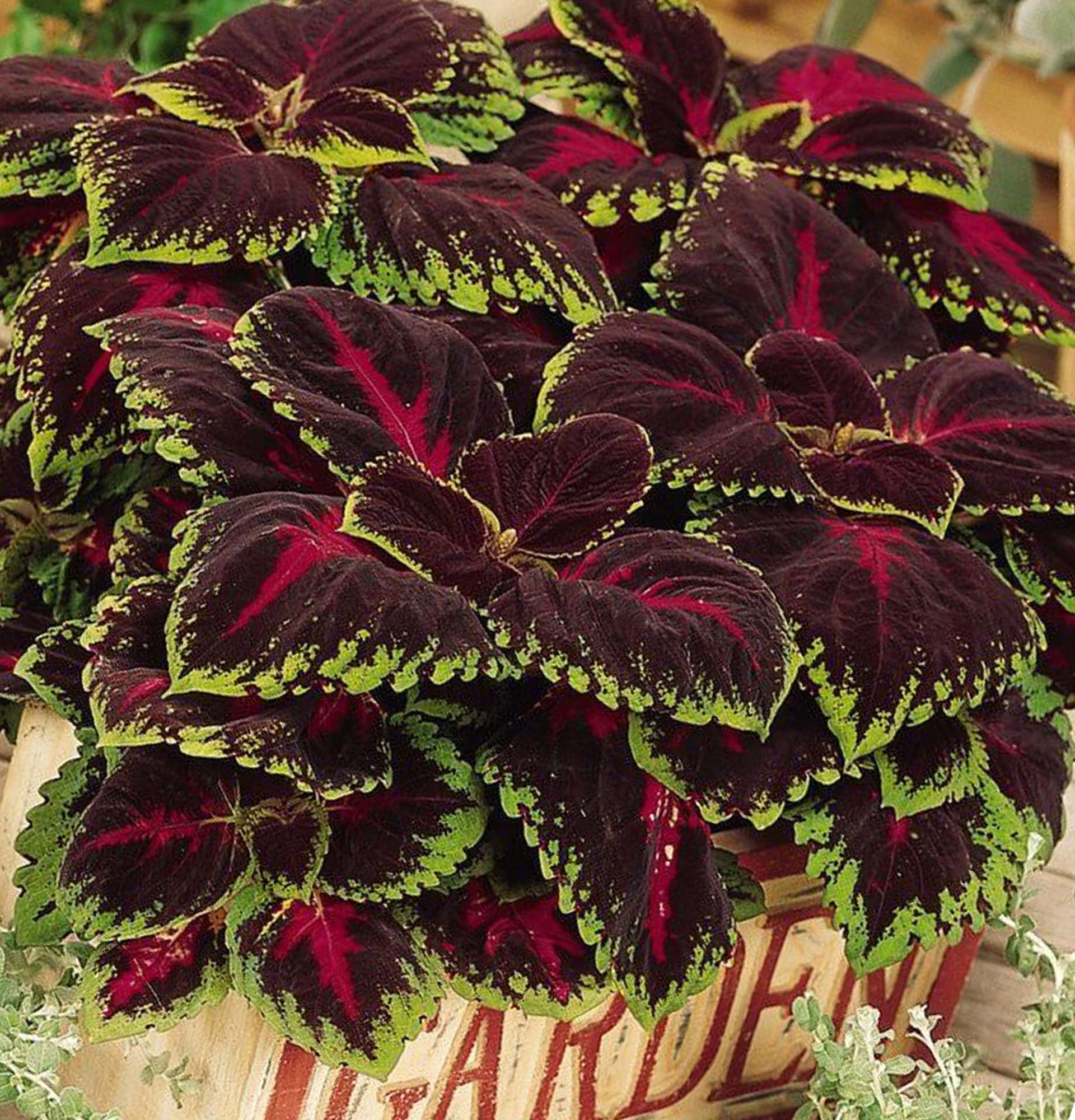
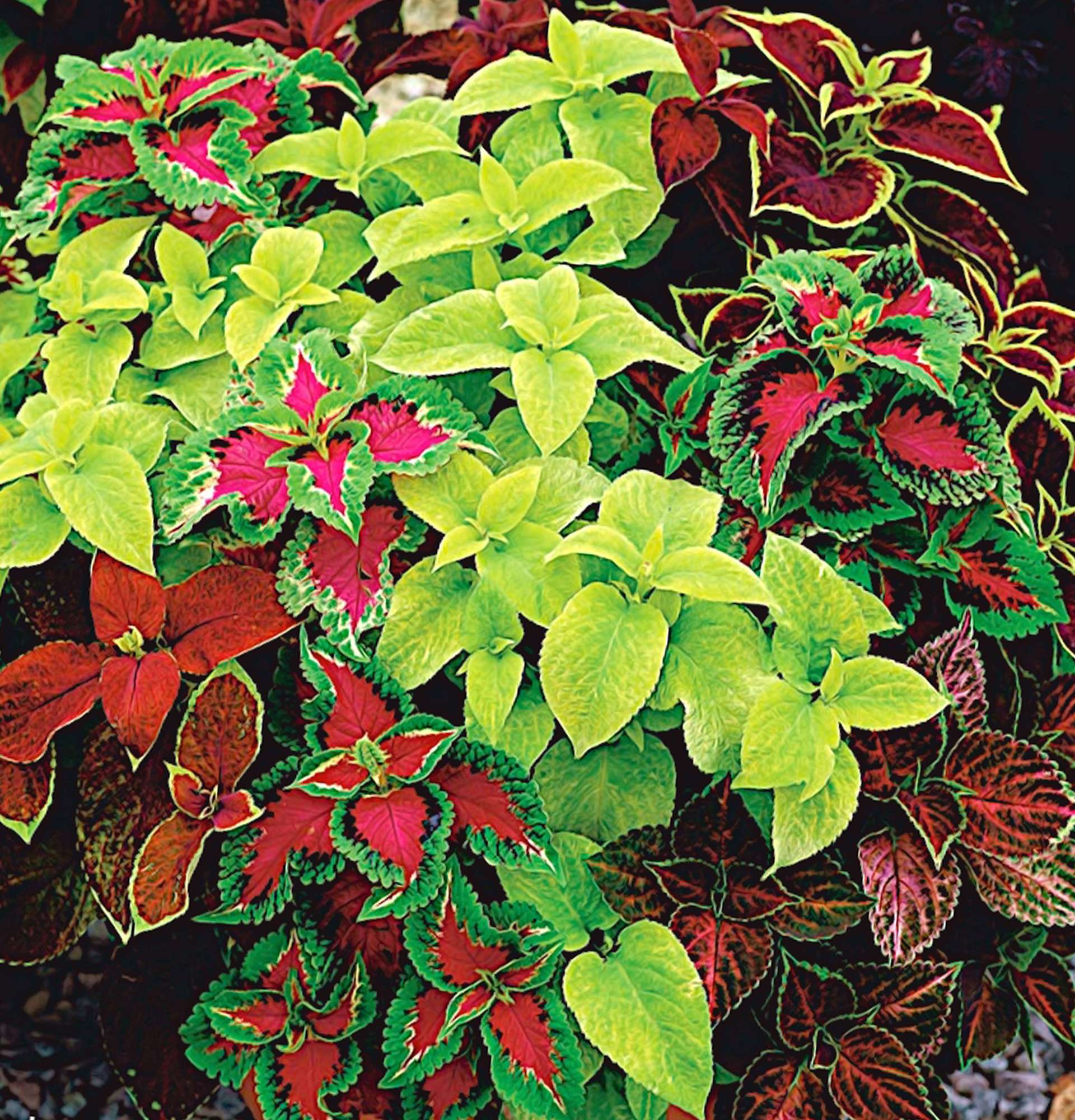
Write comments
Comments